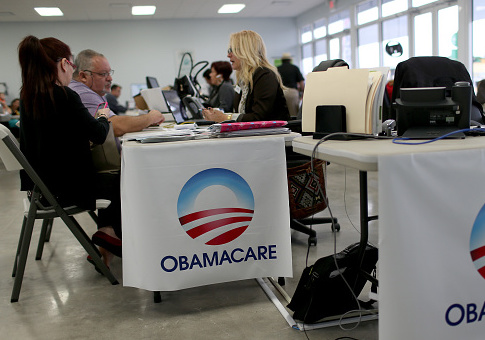An expert warned lawmakers that the Affordable Care Act is in a partial actuarial death spiral with large proportions of those below 200 percent of the federal poverty level enrolling.
At a Senate Finance Committee hearing on Tuesday, Avik Roy, president at the Foundation for Research on Equal Opportunity, explained how Obamacare's individual mandate didn't do much to force individuals to sign up for health care coverage.
"Most independent research finds that the individual mandate is not doing much to drive the uninsured to enroll in the ACA's exchanges," Roy explained. "While a heavily coercive and strictly enforced individual mandate could drive Americans to participate in the ACA's high-cost market, the actual individual mandate stipulated in the ACA contains numerous loopholes and exemptions, with weak penalties for noncompliance."
Because of a weak mandate, Roy says there have been higher populations of those below 200 percent of the federal poverty level signing up for Obamacare, while those who make more fail to sign up as much.
"The end result has been a partial actuarial death spiral, in which those below 200 percent of FPL enroll in large proportions in ACA exchanges, while those above 200 percent do not," he said. "A study by Avalere Health, using HHS data, found that in 2016, only 33 percent of those with incomes between 200 and 250 percent of FPL had enrolled in exchange-based coverage, and 26 percent for those between 250 and 300 of FPL."
Roy also noted how Obamacare's regulations and taxes have driven the price of premiums up, increasing them on average by more than double. While the act includes subsidies to help rein in the cost of increasing premiums for some, Roy says millions of individuals are still paying higher premiums.
"While the subsidies have worked to blunt the impact of higher premiums for those with incomes below 200 percent of the Federal Poverty Level (which amounts to $24,120 for a childless adult), millions of working families of limited means have not benefited from the ACA's policy mix," he said. "Indeed, data from insurer filings indicates that, even after ACA subsidies are taken into account, most individuals above 200 percent of FPL are paying higher premiums than they did prior to the ACA."
Another expert, Edmund Haislmaier, a senior research fellow at the Heritage Foundation, told lawmakers he does not expect Obamacare's risk profile to improve since many healthy individuals earning incomes above 250 percent of the federal poverty level are not signing up for Obamacare.
"More concerning are the instances of insurers ceasing to offer ACA-compliant coverage outside of the exchanges to the unsubsidized population," Haislmaier states. "In that subset of the market there is more danger of a so-called death spiral setting in as escalating premiums price more customers out of the market."
Chairman of the committee, Sen. Orrin Hatch (R., Utah), said the expectation that young, healthy enrollees would sign up for Obamacare hasn't come true.
"One of the chief assumptions underlying the Affordable Care Act was that, if the government forced people to purchase health insurance, more young, healthy people would enter the insurance market, which was supposed to offset the increased costs imposed by all of the law's mandates and ensuing regulation," Hatch said. "Enrollment in the individual market may be reaching a tipping point where those who previously had insurance are being priced out of the market and actually becoming uninsured since the enactment of Obamacare."
